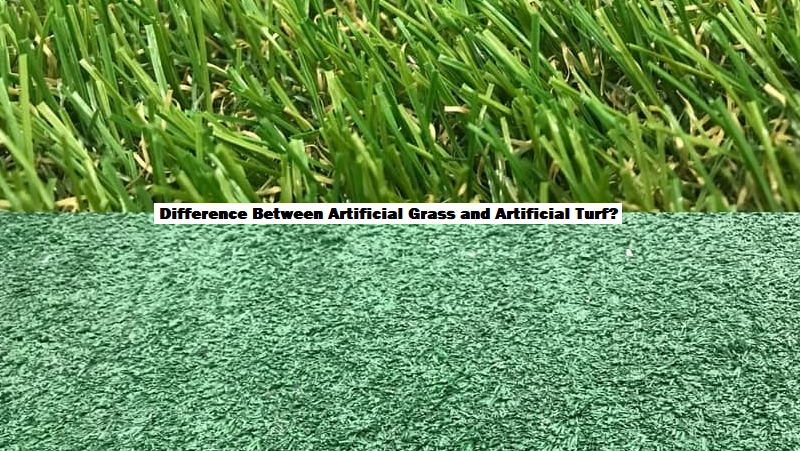In the realm of landscaping and sports, the terms “artificial grass” and “artificial turf” are often used interchangeably. However, to the discerning eye, there are subtle yet significant differences between the two. While both serve as alternatives to natural grass, their applications, compositions, and functionalities diverge. Understanding these disparities is crucial for making informed decisions when it comes to selecting the appropriate option for residential lawns, commercial landscapes, or sports facilities.
Composition and Materials
Artificial Grass: Artificial grass primarily consists of synthetic fibers crafted to resemble natural grass. These fibers are typically made from polyethylene, polypropylene, or nylon. Polyethylene is commonly preferred due to its durability, soft texture, and natural appearance. These fibers are stitched into a backing material, often made from a blend of materials like polypropylene or latex. The backing provides stability and support to the synthetic blades. Additionally, artificial grass often incorporates infill materials, such as silica sand or rubber granules, to enhance stability, cushioning, and resilience.
Artificial Turf: Artificial turf, on the other hand, encompasses a broader category that includes various surfaces engineered for different purposes. Unlike artificial grass, which mimics the appearance and texture of natural grass, artificial turf is designed to replicate the playing surface of natural turf in sports arenas. It typically consists of synthetic fibers, infill materials, and a backing system. The fibers used in artificial turf are usually shorter and denser compared to those in artificial grass. This design aims to provide durability, resilience, and optimal playing conditions for sports like football, soccer, and baseball. The infill materials in artificial turf serve to provide stability, shock absorption, and traction, contributing to player safety and performance.
Applications
Artificial Grass: Artificial grass finds widespread applications in residential and commercial landscaping. It offers an attractive and low-maintenance alternative to natural grass lawns, particularly in regions with challenging climates or water scarcity. Homeowners, businesses, and municipalities utilize artificial grass for front yards, backyards, parks, playgrounds, and public spaces. Its versatility, durability, and aesthetic appeal make it a popular choice for creating green spaces that remain lush and vibrant year-round without the need for mowing, watering, or fertilizing.
Artificial Turf: Artificial turf is predominantly utilized in sports arenas and recreational facilities where natural grass may not be feasible or practical. It serves as the playing surface for various sports, including football, soccer, rugby, hockey, tennis, and golf. Sports organizations, schools, universities, and municipalities invest in artificial turf to ensure consistent playing conditions, minimize downtime due to weather, and reduce maintenance costs associated with natural turf. Additionally, artificial turf enables multi-purpose use of sports fields, accommodating different sports and activities throughout the year.
Performance and Maintenance
Artificial Grass: Artificial grass offers several advantages in terms of performance and maintenance. It provides a uniform and aesthetically pleasing surface that remains green and pristine regardless of weather conditions or foot traffic. Unlike natural grass, artificial grass does not require watering, mowing, or fertilizing, saving time, money, and resources. Maintenance tasks typically involve occasional brushing to redistribute infill materials and remove debris. With proper care, artificial grass can maintain its appearance and functionality for many years, making it a cost-effective landscaping solution in the long run.
Artificial Turf: Artificial turf is engineered to withstand the rigors of intensive use in sports environments. Its dense fibers and resilient infill materials offer excellent shock absorption, traction, and durability, reducing the risk of injuries and ensuring consistent playing conditions. However, maintaining artificial turf requires more specialized care compared to artificial grass. Regular grooming, brushing, and aerating are necessary to prevent compaction, maintain proper infill distribution, and uphold performance standards. Additionally, periodic inspections and repairs may be required to address wear and tear, seam separations, or drainage issues.
Environmental Considerations
Artificial Grass: While artificial grass offers water conservation benefits by eliminating the need for irrigation, it poses certain environmental challenges. Most synthetic grass products are non-biodegradable and may contribute to landfill waste at the end of their lifespan. Additionally, the manufacturing process involves the use of petroleum-based materials and chemicals, which have environmental implications. However, advancements in eco-friendly materials and recycling programs aim to mitigate these concerns, promoting the adoption of more sustainable artificial grass solutions.
Artificial Turf: Artificial turf presents environmental considerations similar to those of artificial grass, albeit on a larger scale. The manufacturing and disposal of synthetic turf materials raise concerns about resource consumption, waste generation, and pollution. Moreover, the installation of artificial turf often involves extensive ground preparation, excavation, and the use of non-permeable materials, which can impact soil health, water runoff, and urban heat island effects. Despite these challenges, efforts are underway to develop eco-friendly alternatives and sustainable practices in the artificial turf industry.
Read Also: The Benefits of Artificial Grass for Walls
Conclusion
While artificial grass and artificial turf share commonalities in their synthetic composition and purpose as alternatives to natural grass, they differ significantly in their applications, compositions, functionalities, and maintenance requirements. Understanding these distinctions is essential for selecting the most suitable option for landscaping or sports facilities based on specific needs, preferences, and environmental considerations. Whether enhancing the beauty of residential landscapes or optimizing the performance of sports fields, both artificial grass and artificial turf offer innovative solutions that continue to evolve in response to technological advancements and sustainability goals.
Experience the beauty and convenience of artificial grass in Birmingham UK. Say goodbye to mowing, watering, and maintenance hassles while enjoying a vibrant and green lawn all year round. Contact us now to discover the perfect artificial grass solution for your home or business.
